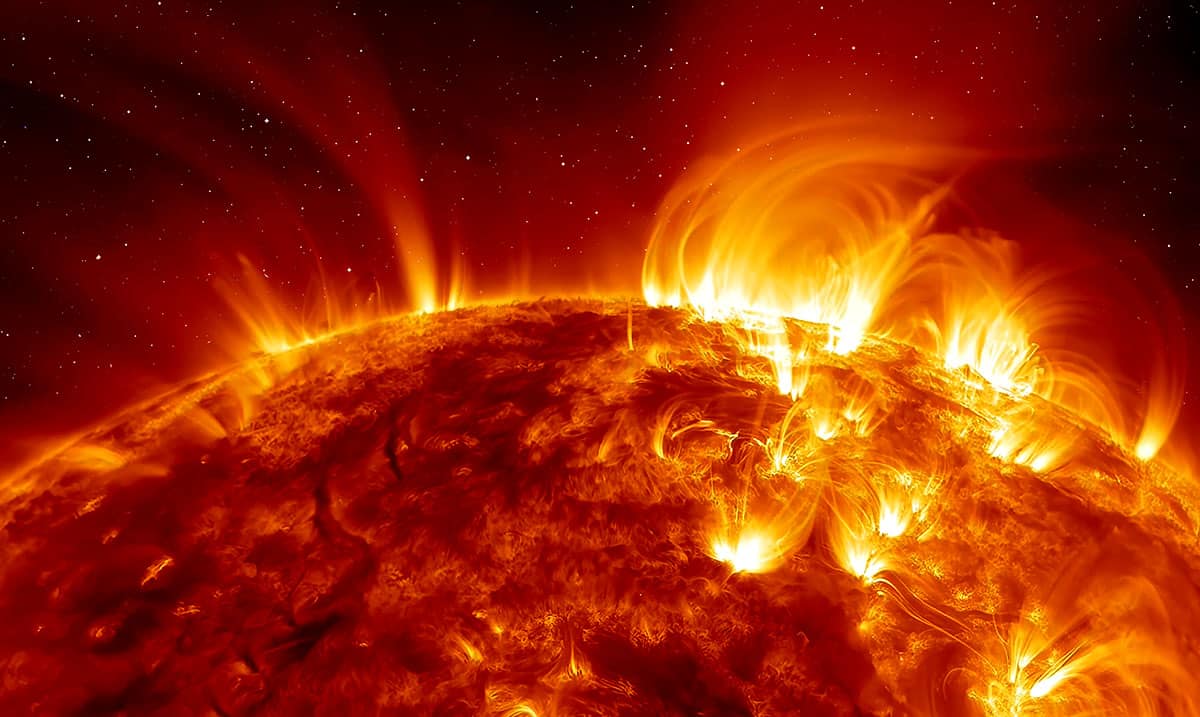While the Sun may seem eons away from us, there is no question as to how the activity on its surface can be detrimental to us here on Earth. Storms show us that regularly, however, a new upcoming solar storm cycle could outdo anything we’ve seen before.
On the surface of the sun, there are sunspots. From time to time, these sunspots erupt and cause solar storms. During a solar storm, coronal mass ejections cause radiation to come hurtling into the atmosphere, which from time to time makes it into our atmosphere causing satellite disruptions, power grid malfunctions, and the aurora borealis (Northern and Southern lights.) Even though we experience the storms pretty frequently, they are typically pretty mild, so we don’t always hear about them.
This is likely because there are times of heavier activity and then times of less heavy activity, and these fluctuations are called cycles. And while things have been pretty calm for a while, we are nearing the beginning of the more intense cycle.
When speaking at the 36th Small Satellite Conference in Utah, NOAA Scientist from the Space Weather Prediction Center, Tzu-Wei Fang said, “Whatever you’ve experienced in the past two years doesn’t matter. Whatever you learned from the past two years is not going to apply in the next five years,” when speaking out the solar activity.
Fang even spoke on the fact that multiple Space X Starlink satellites had fallen from the sky due to the effects of a solar storm. “That storm was a minor storm in our catalog,” she told the conference. “It’s not a huge storm.” Compared to what is coming, that was just the tip of the iceberg, Fang asserted.
Even the mildest storms can impact us in major ways. But, massive solar storms, like what is predicted to be ahead, could be disastrous. Based on current findings, we have had numerous solar storms recently, and Fang explains that as we move deeper into the upcycle, it’s highly likely that powerful enough storms could completely cripple satellites that weren’t equipped to endure.
“If you look at the beginning of this year, things are very crazy. We’ve had a solar flare almost every week,” Fang said at the panel. “We’re already way beyond where we predicted at this point.”
While things most definitely haven’t reached apocalypse level, by any means, it’s still sketchy to think about how this could go. Thankfully, we have the NOAA and other space weather prediction centers to give us at least some foresight before they hit.

